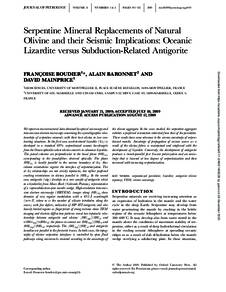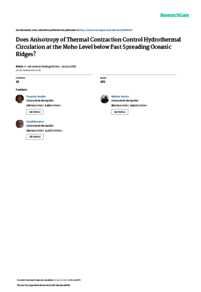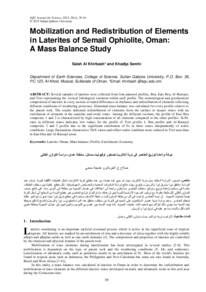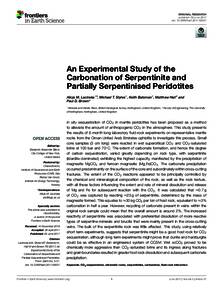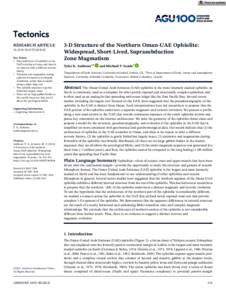Document
Serpentine mineral replacements of natural olivine and their seismic implications : oceanic lizardite versus subduction-related antigorite.
Identifier
DOI: 10.1093/petrology/egp049
Contributors
Baronnet, Alain., Author
Mainprice, David., Author
Publisher
Oxford University Press.
Gregorian
2009-08
Language
English
English abstract
We report on microstructural data obtained by optical microscopy and transmission electron microscopy concerning the crystallographic relationships of serpentine minerals with their host olivine in two contrasting situations. In the first case, mesh-textured lizardite (liz) is developed in a standard 60% serpentinized oceanic harzburgite from the Oman ophiolite where olivine converts to columnar lizardite. The joined columns are perpendicular to the basal plane (001) liz, corresponding to the pseudofibres observed optically. The plane (001) liz is locally parallel to the narrow boundary ol-liz; thus column orientations register the interface of serpentinization. The ol-liz relationships are not strictly topotactic, but reflect preferred cracking orientations in olivine, parallel to (010) ol. In the second case, antigorite (atg) develops in a rare sample of antigorite schist in a kimberlite from Moses Rock (Colorado Plateau), representative of a suprasubduction-zone mantle wedge. High-resolution transmission electron microscopy (HRTEM) images along [010]. atg show domains of very regular modulation with a 43·5 Å wavelength (m = 17, where m is the number of silicate tetrahedra along the wave), with few defects, indicative of HP-HT antigorite, and also heavily kinked regions as fingerprints of strong tectonic shear. TEM imaging and electron diffraction patterns reveal two topotactic relationships between antigorite and olivine: [100] atg//[010]. ol and <100>. atg//<100>. ol; the planes in contact are (001) atg//(100) ol and (001) atg//(010)\ ol, respectively. The [010] atg//[001] ol and antigorite lamellae are parallel to the forsterite b-axis. In both cases, the topography of olivine-serpentine interfaces is controlled by open fluid pathways along microcracks oriented according to the anisotropy of the olivine aggregate. In the cases studied, the serpentine aggregate exhibits a preferred orientation inherited from that of the peridotite. These results have some relevance to the seismic anisotropy of serpentinized mantle. Anisotropy of propagation of seismic waves as a result of the olivine fabric is maintained and reinforced with the development of lizardite. Conversely, the development of antigorite produces a trench-parallel fast S-wave polarization and an anisotropy that is lowered at low degrees of serpentinization and then increased with increasing serpentinization.
Member of
ISSN
0022-3530
Resource URL
Category
Journal articles

